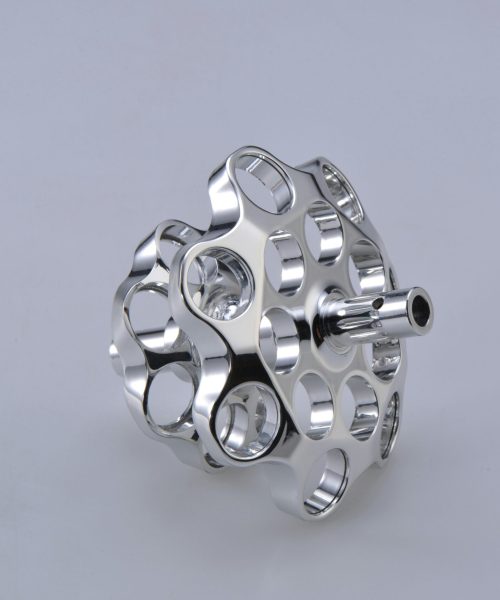CNC machines, the precision workhorses of modern industry, have brought us countless finely crafted products. Yet, the accompanying software often leaves much to be desired, with complex user interfaces, limited functionality, and convoluted operations acting as stumbling blocks to the widespread adoption of CNC technology.


Current Situation: Software Snags That Hinder CNC Progress
Despite years of development, CNC machine software still grapples with numerous issues, which can be summed up as follows:
- Chaotic User Interfaces: Many software programs come with a bewildering array of buttons, menus, and windows that resemble a game of Tetris gone wrong. Users often find it challenging to get started quickly, leading to steep learning curves and frustratingly low operational efficiency.
- Limited Functionality: Some software packages offer a one-size-fits-all approach, lacking essential features like 3D modeling, simulation, and trajectory optimization. This restriction stifles user creativity and hampers productivity.
- Inflexibility: Many programs lack customization options, making it difficult for users to tailor them to their specific needs—no custom macros or hotkeys here! This rigidity can lead to a cookie-cutter experience that doesn’t cater to individual preferences.
- Compatibility Issues: Inter-software compatibility can be a headache, with inconsistent data formats making data transfer and sharing a real chore. This lack of cohesion lowers overall work efficiency and adds to user frustration.
- Insufficient Updates and Maintenance: Some software suffers from a lack of timely updates, meaning that user needs and new technologies can go unmet. Slow feature iterations can leave users feeling like they’re stuck in a time warp.
These challenges often leave users feeling bewildered and exasperated, significantly impacting machining efficiency and overall job satisfaction.
Reasons: The Tough Challenges of Software Development
CNC machine software development faces several hurdles, contributing to its lagging evolution:
- High Development Costs: Creating powerful, user-friendly CNC software demands substantial investments in time, resources, and cash. With fierce market competition and rampant price wars, many manufacturers find it tough to allocate funds for software development.
- High Compatibility Demands: CNC software must seamlessly integrate with hardware, operating systems, and other software, which adds complexity and cost to development efforts.
- Diverse User Needs: Different users have different requirements. Industrial users might seek reliability, while hobbyists prefer simplicity. Balancing these diverse needs is a tightrope walk for developers.
- Costly Updates and Maintenance: Continuous updates and maintenance are essential for keeping software relevant, yet they require significant resources—often too much for many manufacturers to bear.
Future: Open Source, Intelligence, and Human-Centric Design
Amid these challenges, the future of CNC machine software is starting to take shape:
- Rise of Open Source Software: Open source solutions like LinuxCNC and GRBL are gaining popularity for their flexibility and customization options. With large community support, users can modify the code to suit their unique needs, essentially creating a personalized CNC experience.
- Smart Technologies on the Horizon: The integration of artificial intelligence and machine learning will usher in exciting new features like automatic programming, path planning, and optimization. Get ready for a boost in machining efficiency and precision!
- User-Friendly Design: Future software interfaces promise to be more intuitive and user-friendly, with streamlined processes that reduce learning curves and elevate user experience. Say goodbye to confusion and hello to clarity!


Looking Ahead: Better CNC Software Is Just Around the Corner
With advancing technology and shifting market demands, CNC machine software is poised to evolve toward greater user-friendliness, intelligence, and openness. Users will have a wider array of choices, enabling them to harness the full potential of CNC machines and unlock new possibilities for precision machining.


How to Choose the Right CNC Machine Software?
- Assess Your Needs: Different software targets different user groups. Professional industrial software might pack powerful features but come with a steep learning curve, while hobbyist software is generally simpler and more user-friendly.
- Check User Reviews: Explore user feedback to understand the pros and cons of various software options. Real-world experiences can be incredibly insightful.
- Try Before You Buy: Most software offers free trials—take advantage of this! Test the software for a while to get a feel for its features and usability before making a purchase.
- Keep an Eye on Updates: Opt for software that receives regular updates and maintenance. This ensures you’ll have a stable, cutting-edge tool at your fingertips.


The knowledge about CNC machining software you should know:https://en.wikipedia.org/wiki/Numerical_control
Заключение:
The development of CNC machine software is crucial for the application and promotion of Технология обработки с ЧПУ, directly affecting user experience and operational efficiency. We eagerly anticipate the emergence of more intuitive, powerful, and user-friendly CNC software that helps us better leverage CNC technology, driving forward the progress of industrial production.








